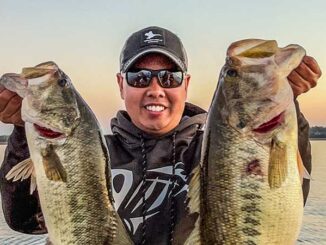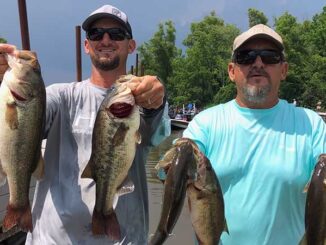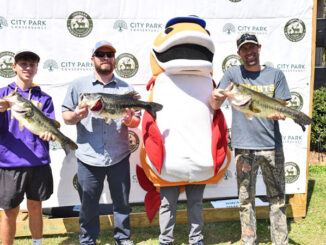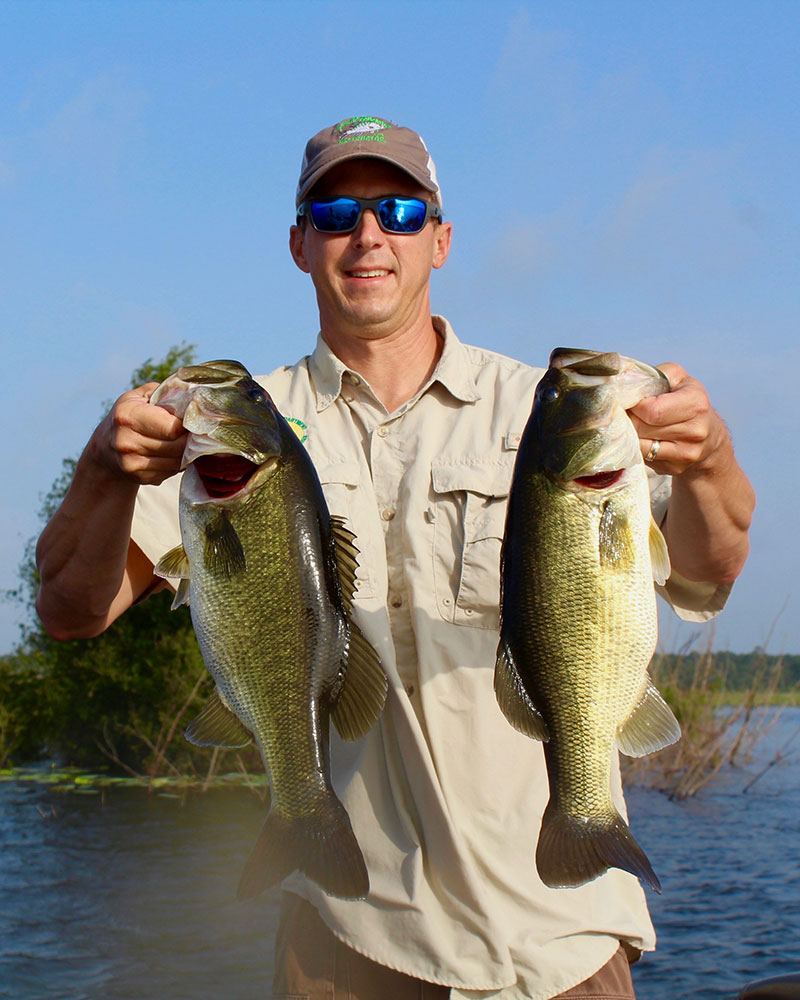
When it comes to Bussey Brake largemouths, that’s a good thing
“Bush League” is a term which was coined to describe minor league baseball, where things aren’t quite up to snuff with the top professional level play in Major League Baseball.
But if you hear somebody refer to the largemouth bass fishing at Bussey Brake Reservoir in Morehouse Parish as “bush league,” it’s a definite compliment. Right now when it comes to huge largemouth, Bussey is making a championship run.
The old lake, given new life by a complete renovation the past decade, is producing some of the biggest bass in the state, more per acre than any other Louisiana waterbody. Bussey is a 2,200 acre man-made lake. Even though it has been reopened for just two years this summer, the lake is producing double-digit lunkers faster than Nolan Ryan could strike out batters.
While there is loads of new structure in the lake like willow thickets, lily pad fields, rocky banks and grassbeds, there is no question where the top big bass catches have been made. It’s in the bushes.
Ryan Daniel not only manages the lake, he also occasionally gets to go catch some healthy Bussey bass like these.
Someone who has spent a lot of time getting to know those bushes — and Bussey’s big bass — is Swartz resident Blake DeCorte. DeCorte, a 33-year-old home health nurse, went on a mission in 2022 to learn and fish Bussey as much as he could. He had amazing results, and even earned the nickname “Bussey Brake Blake” from his fishing buddies.
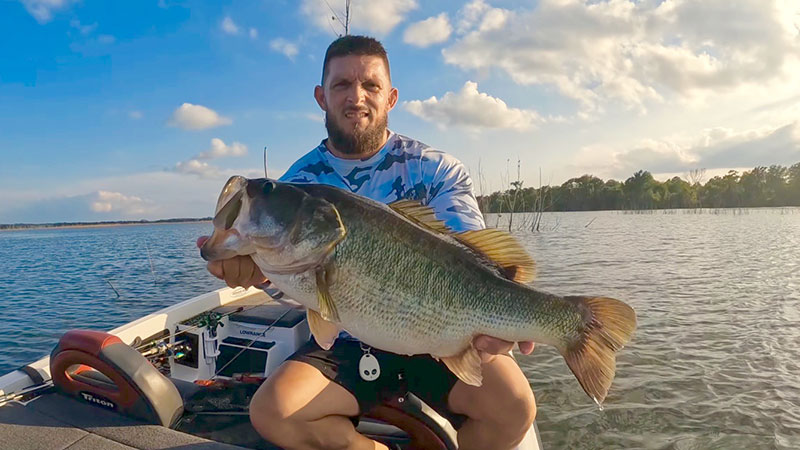
“The big bass at Bussey love to get deep in the bushes, especially the single bushes,” he said. “Fishing the bushes in the early spring is probably the best way to catch a real lunker. But it takes patience. There isn’t one in every bush and it isn’t always easy to get them to bite.”
DeCorte has two valuable pieces of advice to offer anglers wanting to go for a fish of a lifetime.
“I have found that without a doubt, it’s best to target the bushes that still have some sort of vegetation growing on them,” he said. “I don’t know, maybe they have a little bit more cover for bass to hide in and to ambush bait from. But they like the ones that are alive.
“The dead bushes can still produce fish; don’t get me wrong,” he said. “But those with vegetation are the best.”
DeCorte likes to flip black and blue Beaver baits and Reaction’s D-Bomb baits and he fishes those most of the time. And when he says fish the bushes, he has a specific technique in mind.
“When I say fish the bushes, I don’t mean fish beside the bush or around the bush,” he said. “I mean pitch your bait right up in the middle of the bush. If we were talking horseshoes, we’d say you want a ringer, not just a leaner. You need to get that bait to the base of the bush. That’s where the big ones will be, the thickest part of the thickest bush.”
DeCorte caught 18 bass over eight pounds in Bussey last year but still came up just short of the double digit mark. But that’s one of his goals for 2023.
Bussey’s top two
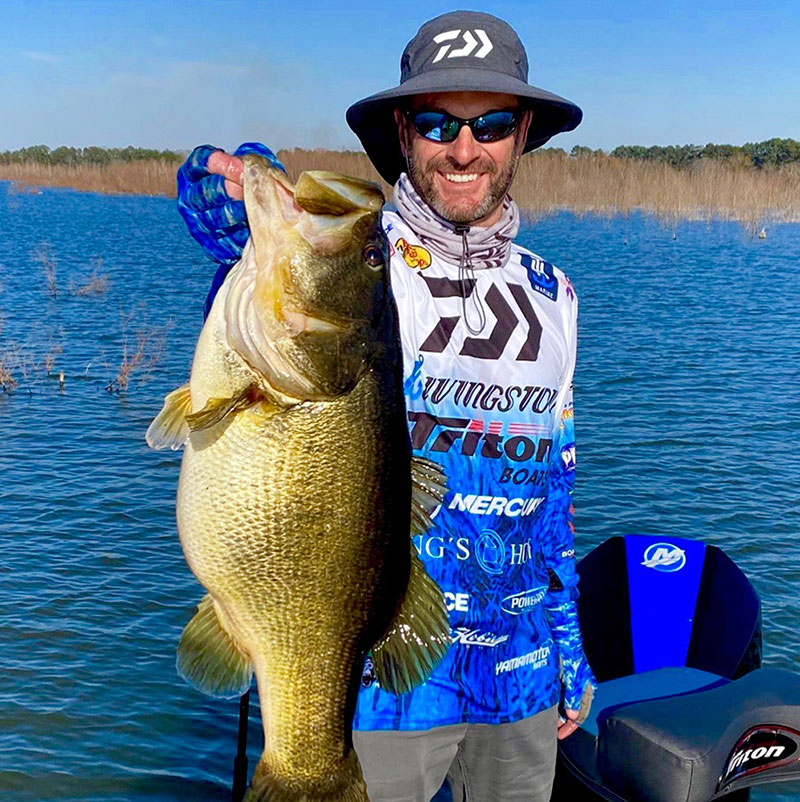
It could easily happen. The two largest recorded bass to ever come out of Bussey were caught by professional bass anglers, one in a tournament and one just fishing for fun. They were both flipping plastic lures into bushes.
On Sunday, March 14, 2021, Tyler Stewart of West Monroe was out for an evening “off” work, just fishing for fun. He pitched a black and blue Googan Bandito Bug in a bush in three feet of water. He said there wasn’t anything special about the bush; he was just pitching to them all. He didn’t feel a bite, but he felt a mushy feeling, so he set the hook. He felt hung up, then after about three seconds, whatever he hung moved. He couldn’t even turn the bass at first it was so strong. The hawg weighed 12 pounds, 11 ounces.
He actually took the bass 20 miles in his livewell to have it weighed, then returned to the lake, launched his boat again and took the big lunker back to the very bush he caught her from and released her.
Fast forward to Feb. 10, 2022, and the final round of the $800,000 Major League Fishing professional tournament final round on Bussey. Randy Howell set an MLF record for the biggest bass in circuit history on Caney Lake the day before. The Alabama pro was having a slow day on Bussey when the same thing happened to him as to Stewart.
He dropped a Yamamoto Senko into a bush and brought out a massive 12-14 pound lunker that set a second MLF record for big bass. He immediately weighed his fish and released it back in the lake. In that championship day, the 10 anglers caught three 5-pounders, two 6-pounders, three 7-pounders, one 8-pounder, two 9-pounders, and Howell’s record 12-14. And it was in extremely poor fishing conditions.
A note for anglers fishing Bussey. After being donated to the Louisiana Wildlife and Fisheries by International Paper, the lake was almost drained, improvements made and fish restocked. The big fish being caught today were part of the original fish left in small portions of the lake that were not drained, biologists say.
WMA rules
Since it is managed by LDWF, it is considered a Wildlife Management Area and special rules and regulations apply. Make sure you follow them. Most anglers who catch big ones weigh and photograph them and then release them. If you do catch a lunker bass and want to weigh it on certified scales for record consideration, there is a set of certified scales maintained by LDWF at the Main Boat Dock. The scales are locked for safekeeping, but you can call one of the numbers listed there and you will be given the keypad code to unlock them.
Special regulations include a five bass per day limit with a 16-inch maximum length limit, with the exception that one bass longer than 16 inches may be kept.
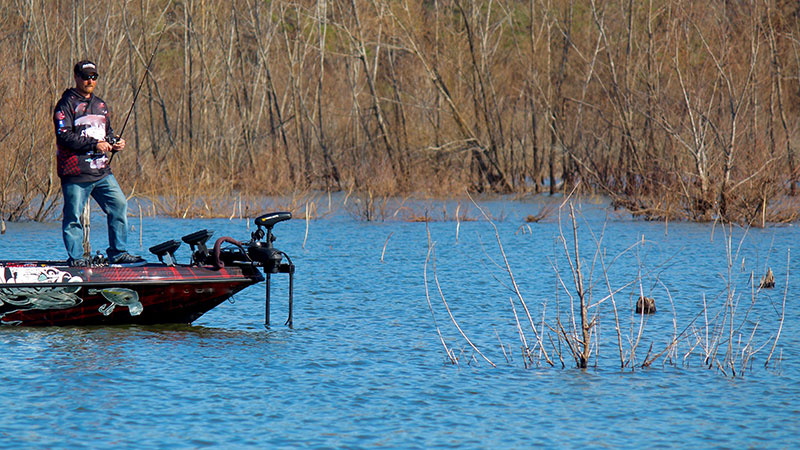
Despite its great early showing since reopening, most people believe the best is ahead for Bussey, if people keep taking care of the 10 pounders by weighing them and releasing them. That includes Louisiana Department of Wildlife and Fisheries biologist Ryan Daniel, who oversaw renovation of the lake and current management efforts. Daniel doesn’t hesitate when asked if he thinks we will see even bigger bass this year.
“I really do,” he said. “We’ve seen a few just under 13 pounds already. Nearly all of the bigger fish caught thus far have been reported to have been released in good condition. The growth on those fish has been amazing, assuming these are some of the brood fish that were stocked in 2018. That just shows the potential of pure Florida bass released into optimal habitat conditions. As long as they keep growing, we should see some 14’s (or bigger) very soon.”
As for why bushes are such a good target, Daniel has some ideas about that, too.
“It’s hard to guess what makes certain bushes (or cover in general) more attractive than others,” he said. “With larger, older fish, we can only assume that they simply want to avoid other fish and fishermen. A bush that offers a good bit of horizontal cover would also be desired. Depth will also be a key factor. During the pre-spawn and spawning periods, bushes adjacent to spawning areas will be preferred. While the lake was down, single bushes likely grew in the open without competition from other vegetation and may have produced more and denser branches, providing better quality cover.”
This is important
If you are going to fish any of the structure at Bussey, there are some things you should do, knowing a monster might be the next fish to tap on your lure. Definitely have good line as these fish will immediately attempt to wrap around every limb in the bush. There are already many stories about giant fish breaking off in the bushes there. Anglers should use a minimum of 17 pound test line and make sure it’s fresh. Retie often while fishing through the bushes.
Work your lure as deep into the branches as possible. This can be most easily done with weedless and weightless plastics. A weighted worm/creature or jig can be used if the fish are holding near the bottom, especially in the deeper bushes.
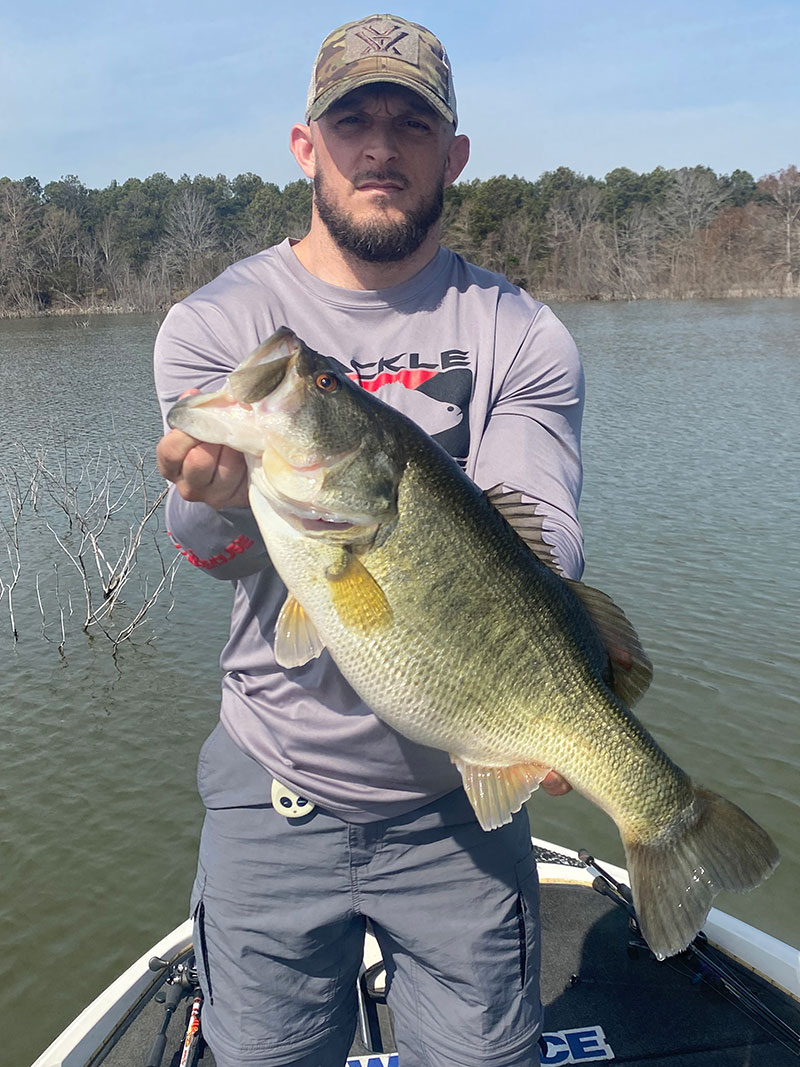
After making his giant catch on Bussey, one thing Howell saw at Bussey that could help you catch more bass is to watch water depths, even subtle changes. He saw three zones that he would target and when he caught one in a “zone,” he’d stick with that depth. Of course, he said, that can vary from day to day.
“In lakes like this without a lot of defined depth change, it’s important to lock in on subtle hints as to where the bass are,” he said. “At Bussey, there are scrubby willows in 1-3 feet of water; bushes and tops in 4-5 feet of water and deeper trees and shade lines where fish can hang out in 5-7 feet of water. Find the right depth and concentrate on it. And later in the day, look for isolated bushes the same depth, especially for the big fish.”
Local fisherman Daron Bonz Goyne has fished the lake his whole life and said protecting the lake so it can still continue to produce even bigger bass is important. If an angler catches a 10-pounder and hauls it off, as a few have reportedly done, they could be taking the next state record away from Bussey if it had been given a little more time. Or, taking a fish of a lifetime away from some young angler. This isn’t the lake to do that, Goyne said.
“Right now, most of us aren’t even keeping a bass, and that is very important for the future of Bussey,” Goyne said. “If we protect this fishery, there’s no doubt in my mind that it will be the next Caney Lake.”
And, most likely, the best is yet to come.
Editor’s Note: As we neared press time, Todd Herrington of Collinston landed a new Bussey lake record 13.58 pounder.
